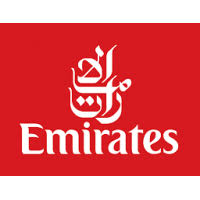Umrah Info
The Umrah is an Islamic pilgrimage to Makkah, Hijaz, Saudi Arabia, performed by Muslims that can be undertaken at any time of the year, in contrast to the ?ajj which has specific dates according to the Islamic lunar calendar. In Arabic, Umrah means "to visit a populated place." In the Sharia, Umrah means to perform Tawaf round the and Saee between Safa and Marwah hills, both after assuming Ihram.
Ihram must be observed once traveling by land and passing a Miqat like Zu 'l-Hulafa, Juhfa, Qarnu 'l-Manazil, Yalamlam, Zat-i-'Irq, Ibrahim Mursia, or a place in al-Hill. Different conditions exist for air travelers, who must observe Ihram once entering a specific perimeter about the city of Makkah. It is sometimes called the 'minor pilgrimage' or 'lesser pilgrimage', the Hajj being the 'major' pilgrimage which is compulsory for every Muslim who can afford it. The Umrah is not compulsory but highly recommended.
Differences between the Hajj and Umrah
- Both are Islamic pilgrimages, the main difference is their level of importance and the method of observance.
- Hajj is one of the five pillars of Islam. It is obligatory for every Muslim once in their lifetime, provided they are physically fit and financially capable
- Hajj is performed over specific days during a designated Islamic month. However, Umrah can be performed at any time.
- Although they share common rites, Umrah can be performed in less than a few hours while Hajj is more time-consuming, and involves more rituals.
Types of Umrah
A certain type of the Umrah exists depending on whether or not the pilgrim wishes to perform Umrah in the Hajj period, thus combining their merit.
When performed alongside the Hajj, Umrah is deemed as Umrat al-tamattu and is part of a fuller Hajj (Hajjul tamattu). More precisely, the rituals of the Umrah are performed first, and then the Hajj rituals are performed.
Otherwise, when performed without continuing to perform Hajj, the Umrah is considered a "single" Umrah (Umrah Mufradah).
Rituals
The pilgrim performs a series of ritual acts symbolic of the lives of Ibrahim (Abraham) and his second wife Hajar, and of solidarity with Muslims worldwide. Pilgrims enter the perimeter of Makkah in a state of Ihram and perform
- Tawaf , which consists of circling the Ka'bah seven times in an anticlockwise direction. Men are encouraged to do this three times at a hurried pace, followed by four times, more closely, at a leisurely pace.
- Sa'ee which means rapidly walking seven times back and forth between the hills of Safa and Marwah. This is a re-enactment of Hajara's frantic search for water. The baby Ismael cried and hit the ground with his foot and water miraculously sprang forth. This source of water is today called the Well of Zamzam.
- Halq or taqsir: Taqsir is a partial shortening of the hair typically reserved for women who cut a minimum of one inch or more of their hair. A halq is a complete shave of the head, usually performed on men. Both of these signify the submission of will to God over glorifying physical appearances. The head shaving/cutting is reserved until the end of Umrah.
These rituals complete the Umrah, and the pilgrim can choose to go out of ihram. Although not a part of the ritual, most pilgrims drink water from the Well of Zamzam. Various sects of Islam perform these rituals with slightly different methods. The peak times of pilgrimage are the days before, during and after the Hajj and during the last ten days of Ramadan.
Meeqath
Meeqath are the principal boundary points of the area within which Muslim pilgrims on the Hajj must be in the state of ihram (a state of consecration in which certain worldly activities are prohibited). These prohibited activities include clipping the nails, shaving any part of the body, having sexual relations; using perfumes, damaging plants, killing animals, covering one's head (for men) or one's face and hands (for women); getting married; or carrying weapons.
The miqat
Five of the six miqats were appointed by the Prophet Muhammad (PBH). The sixth miqat was appointed at a later date for the convenience of travelers from India and other countries east of the Arabian peninsula. The miqats are as follows:
- 1.Dhu'l-Hulayfah - This miqat is about 9 kilometres (5.6 mi) from Medinah and about 450 kilometres (280 mi) from Mecca. Dhu'l-Hulayfah is the miqat for those who live in Madinah and for those who approach Mecca from the direction of Medinah.
- 2.Juhfah - This miqat is about 190 kilometres (120 mi) to the northwest of Mecca. This is the miqat for the people who come from the direction of Syria.
- 3.Qarn ul-Manazil - Also known as Miqat Al-Sail, located 85 kilometres (53 mi) from Mecca, in a small town known as As-Sail Al-Kabeer on Highway 40. This miqat serves pilgrims coming from the Najd region which is generally the middle of Saudi Arabia.
- 4.Yalamlam - This miqat point serves the Hujajj coming from the direction of Yemen. Yalamlam is a small city in the province of Makkah.
- 5.Dhat-i 'Irq - This miqat is about 85 kilometres (53 mi) northeast of Mecca. This miqat serves pilgrims coming from the direction of Iraq, Iran, and other places en route. The miqat is situated in a very rural location, 58 kilometres (36 mi) from Highway 40, the main Taif-Riyadh road.
If one intends to travel to Makkah for either the pilgrimage of the Hajj or Umrah one should wear one's Ihram at these miqat stations. The state of Ihram goes beyond one's clothing and it is considered important to enter a spiritual state of mind.
Entering the Miqat by Air
When flying to Mecca it is necessary to wear one's Ihram before one's plane enters the miqat zone in the air. Jeddah is within the miqat zone as a line from the southernmost miqat at Yalamlam to the northwestern miqat at Juhfah includes Jeddah in the zone. Pilgrims either wear the garments of ihram from their airport of departure, or they may wear it on the plane. Pilots announce entering the miqat about 30 minutes prior so that pilgrims can go to the restroom and change.
Al-Haram
The Haram is the sacred precinct of Mecca within which certain acts are considered unlawful which may be lawful elsewhere. It is prohibited to hunt wild animals, damage any plant or tree, graze animals, carry weapons, fight, or behave in a manner that will violate the sanctity of Masjid al-Haram. If a violation is carried out within the precinct of the Haram, an animal sacrifice (damm) or gift of charity (sadaqah) is required as expiation. The boundaries of the Haram are as follows:
- Masjid Aisha, also known as Masjid Taneem,located about 8 kilometres (5.0 mi) from the Kaaba and 5 kilometres (3.1 mi) away from Mecca, in the direction of Madinah.
- Adaat Laban-On the road to Yemen, 11 kilometres (6.8 mi) away from Mecca.
- Wadi Nakhla -On the road to Iraq, 11 kilometres (6.8 mi) away from Mecca.
- Arafat -On the road to Ta'if, close to Masjid al-Namirah in Arafat, 11 kilometres (6.8 mi) away from Makkah.
- Ji'ranah -Masjid al-Ji'ranah, located about 14 kilometres (8.7 mi) away from Mecca.
- Masjid al-Hudaibiyah -Is on the road to Jeddah, about 16 kilometres (9.9 mi) away from Makkah.
Additional Umrah
If a pilgrim intends to perform an additional umrah, ihram must be assumed outside the boundary of the Haram before reentering Mecca to carry out the rites of umrah. Many pilgrims choose to enter into the state of ihram at Masjid Aisha which is the nearest and most convenient location from Masjid al-Haram. The condition to perform umrah from this miqat is that you should be a resident of Mecca and/or have entered into Mecca for more than 15 days. Transportation to get to this location is readily available near the mosque. Additional umrah, if a person so intends, can be done by assuming Ihram at any of the six miqat points.
Step by Step Guide to Holy Umrah/Umrah
https://www.slideshare.net/tanveerpadder5/final-umrah-step-by-step/56
This is a simple, step by step presentation for Holy Umrah. including all the required duas in both Arabic & English.
You wont' need anything else if you follow this guide for performing Umrah.
You won't miss any important holy step of performing holy Umrah if you follow this presentation
This can be easily printed or downloaded to your computer, Laptop, notebook, I pad, IPhone or any other electronic device.
This would be of great help to people going to perform Umrah. You can download this guide as PPT here: https://www.slideshare.net/tanveerpad... .
May Allah accept your Umrah
History
According to the Muslim traditional accounts, access to the Holy Site, and thus the right to practice the Hajj and Umrah pilgrimages have not always been granted to Muslims. It is reported in the Muslim traditional accounts that throughout Muhammad's (PBH) era, the Muslims wanted to establish the right to perform Umrah and Hajj to Makkah since the latter had been prescribed by the Quran. During that time, Makkah was allegedly occupied by Arab Pagans who used to worship idols inside Makkah.
The Treaty of Hudaibiya
In the early days of Islam, it is claimed that tensions arose in Makkah between its pagan inhabitants and the Muslims who wished to perform pilgrimages within. According to the Muslim stories, in 628 AD (6 AH), inspired by a dream that Muhammad (PBH) had had while in Madinah, in which he was performing the ceremonies of Umrah, he and his followers approached Makkah from Medina. They were stopped at Hudaibiya, Quraysh (a local tribe) refused entry to the Muslims who wished to perform the pilgrimage. Muhammad (PBH) is said to have explained that they only wished to perform a pilgrimage, and subsequently leave the city, however the Qurayshites disagreed.
Diplomatic negotiations were pursued once the Muslim Prophet Muhammad (PBH) refused to use force to enter Makkah, out of respect to the Holy Ka'aba. In March, 628 AD (Dhu'l-Qi'dah, 6 AH), the Treaty of Hudaybiyyah was drawn up and signed, with terms stipulating a ten-year period free of hostilities, during which the Muslims would be allowed a three-day-long access per year to the holy site of the Ka'aba starting the following year. On the year it was signed, the followers of Mohammed were forced to return home without having performed Umrah.
The First Umrah
The next year (629 AD, or 7 AH), the Muslim tradition claims that Muhammad (PBH) ordered and took part in the Conquest of Makkah in December 629. Following the agreed-upon terms of the Hudaibiya Treaty, Muhammad (PBH) and some 2000 followers (men, women and children) proceeded to perform what became the first Umrah, which lasted three days. After the transfer of power, the people of Makkah who had persecuted and driven away the early Muslims, and had fought against the Muslims due to their beliefs, were afraid of retribution. However, Muhammad (PBH) forgave all of his former enemies.
Ten people were forvige,and not to be killed after the capture of Makkah:[13] Ikrimah ibn Abi-Jahl, Abdullah ibn Saad ibn Abi Sarh, Habbar bin Aswad, Miqyas Subabah Laythi, Huwairath bin Nuqayd, Abdullah Hilal and four women who had been guilty of murder or other offences or had sparked off the war and disrupted the peace. .






